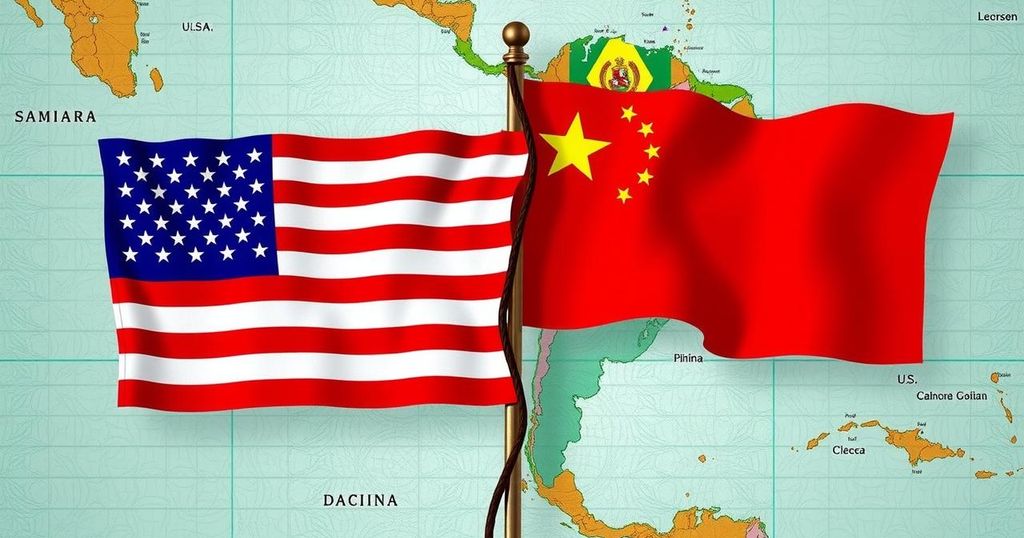The article outlines China’s growing dominance in Latin America, particularly regarding its control over vital energy resources and strategic investments in clean energy technologies. The geopolitical implications of this dominance could lead to heightened tensions with the United States, especially under a potential second Trump administration, as U.S. policy responses aim to confront China’s expanding influence in the region.
The rising influence of China in Latin America has established a complex geopolitical landscape that is of increasing concern to Western nations. China’s dominance over critical supply chains, especially in renewable energy resources like lithium and cobalt, has been solidified through significant investments in the region. These strategic acquisitions not only enhance China’s economic reach but also bolster its political influence over countries in South America, many of which are grappling with authoritarian regimes.
As a major player in energy production, China is heavily invested in Latin America’s clean energy initiatives. Reports indicate that approximately 90% of the solar and wind technologies installed in the region stem from Chinese manufacturing. The Chinese government has successfully executed free trade agreements with multiple Latin American nations and has secured participation in the Belt and Road Initiative, a massive infrastructure program integrating participating countries into its strategic fold.
The geopolitical implications of China’s engagement in Latin America pose a dilemma for the United States, particularly as the Biden administration seeks to counteract China’s increasing foothold by enhancing domestic resource extraction and supply chain security. However, historical engagements and established trade relationships give China an upper hand in accessing vital resources. In the context of a potential re-election of former President Donald Trump, these competition dynamics could shift dramatically, leading to heightened tensions and potential confrontations over trade policies and military alliances in the Western Hemisphere.
The article discusses the strategic significance of China’s increased economic presence and influence in Latin America, particularly as it relates to critical natural resources that are essential for technological and energy advancements. The region is notably rich in lithium, nickel, and cobalt, which are pivotal for renewable energy technologies and electric vehicle production. The Belt and Road Initiative further enables China to cement its geopolitical strategies in the area, raising concerns among Western powers about their diminishing influence in global supply chains. The backdrop of U.S.-China rivalry in trade and geopolitical maneuverings sets the stage for increased competition over Latin America’s key resources.
In conclusion, China’s growing influence in Latin America represents a significant challenge to U.S. interests in the region, particularly in the energy and technology sectors. The potential re-election of Donald Trump could exacerbate these tensions, leading to confrontational policies geared towards counteracting China’s expanding reach. As the geopolitical landscape evolves, both the United States and China must navigate the complex interdependencies that characterize their interactions with Latin American nations, which hold critical resources for future technological advancements.
Original Source: oilprice.com






